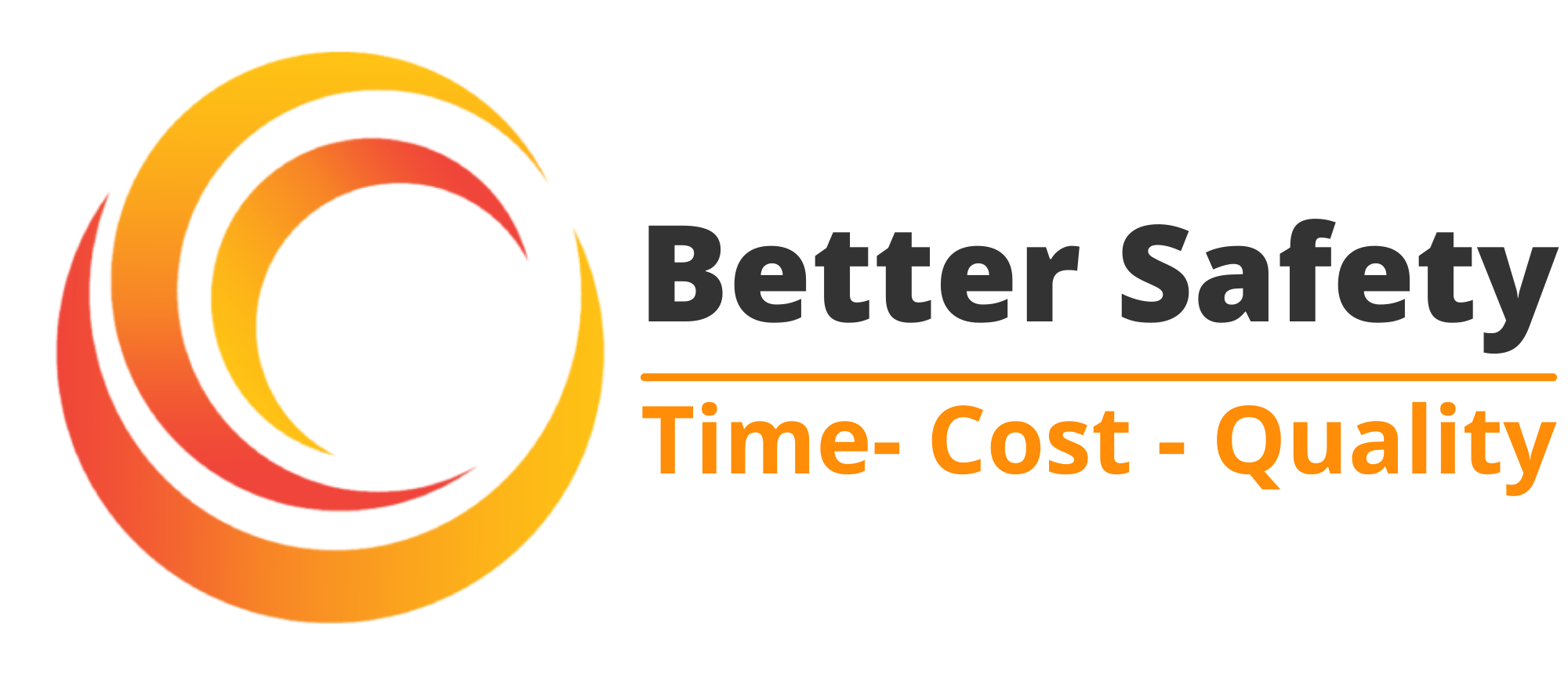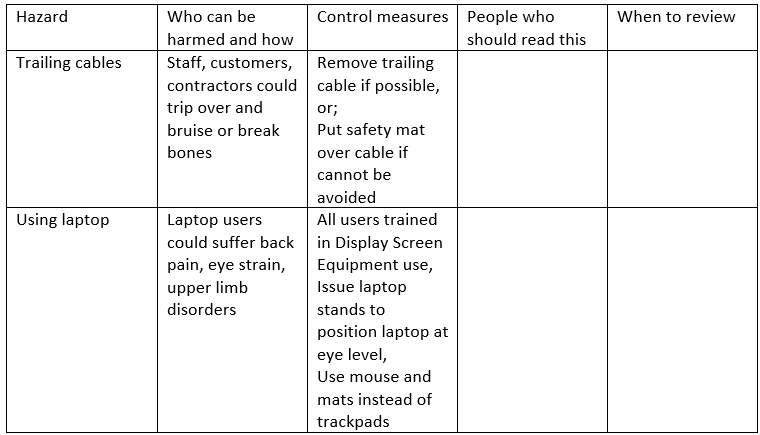How to Write a Health and Safety Risk Assessment For Small Businesses
Writing a risk assessment is not what most small businesses think about when they start up, however, doing them right is a key part of a successful health and safety management system.
If you employ five or more people, you have to write risk assessments and share them with your employees. If you employ less than five people, you still need to carry out risk assessments to achieve health and safety compliance, but you may not need to write them down.
This article is aimed at non-safety people and (hopefully) written in clear English for business owners.
No matter what industry or sector you are involved in, from office safety to managing health and safety in construction, a risk assessment usually follows the same five key themes: Identify the hazards; Record who can be harmed and how; Identify controls; Record your findings and share them with affected people; Review your findings.
1. Identify the hazard
So, what is a hazard? Something which has the potential to cause harm.
A hazard could be a wire trailing across the floor because a person could trip over it and hurt themselves.
Another hazard may be using a laptop for long periods of time. It may not seem obvious, but using a laptop for many hours can cause serious pain in the hands and wrists. Not to mention eye strain and poor back posture.
So, if we were to write a health and safety risk assessment, it would look like this:
2. Identify who can be harmed and how
Taking our same examples as above, think about who can be harmed by your office trailing cables. Who will visit your office? Staff, customers, contractors can all be affected by this.
How could these people be harmed from a trailing cable? We would normally suggest tripping over the cable could lead to bruised body parts and potential broken bones
Who can be harmed from using a laptop? Usually we would record the people using the laptops can be harmed from poor posture, eye strain, sore hands or wrists (we call this upper limb disorders now).
So, the next part would look like this:
3. Identify appropriate control measures
If possible, it is always best to eliminate the hazards when practical to do so. This can be simple if you have a trailing cable, but not so simple of you have just invested £5,000 in laptops for your mobile workforce!
You need to consider not just elimination of a hazard (the best option) but also reducing the hazard to as low as reasonably practical. In the case of laptops, you may need to consider buying work stations, gel mouse mats, comfortable chairs to work with upright posture, positioning laptops so there is no screen glare, eye tests for users, training how to safely use laptops.
Part 3 would look something like this:
4. Record your findings and share them with affected people
It is always a good idea to ask for feedback from people who are doing the tasks that need a health and safety risk assessment. You do not need health and safety consultants or specialist health and safety training to tell you that something could be dangerous in the first instance. Try talking to your employees first!
Write down who you have shared the health and safety risk assessment with, which shows you have involved the people in the risk assessment process, like so:
5. Review your risk assessment
If there are no major changes in your workplace (same office, same number of people, same jobs?) then it could be that you just need to check your risk assessment every year.
If there are some changes, you may need to review this. Examples of changes could be:
· Expanded office to include double the users
· An employee has become pregnant and may not be able to use the same chair anymore
· An employee has reported sharp pains in their hands / wrists
· You want to purchase more equipment
If any of the above changes did happen you would probably review this example risk assessment as soon as you become aware of the situation(s) described.
If not you would simply record as follows:
Finally, just sign and date the risk assessment to say who and when it was completed:
This is a simple exercise designed to teach the basics principles of writing a risk assessment. If you want to understand more about health and safety risk assessments or require some health and safety training for yourself or your team, you can contact us on 0330 0948 848 (Option 1) or leave us an email. We’re always happy to share health and safety advice with all industries across the United Kingdom.







